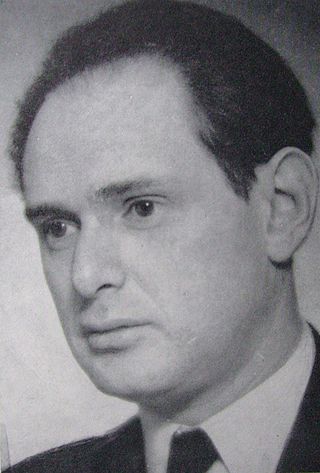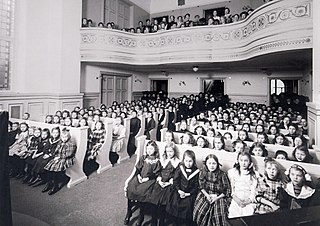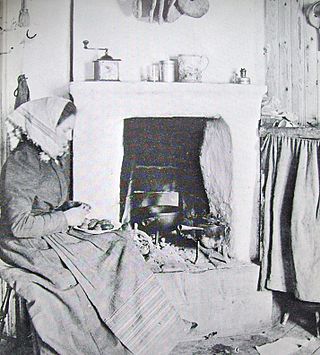| |||||
| Decades: | |||||
|---|---|---|---|---|---|
| See also: | |||||

Events from the year 1874 in Sweden
| |||||
| Decades: | |||||
|---|---|---|---|---|---|
| See also: | |||||

Events from the year 1874 in Sweden
| | This section needs expansion. You can help by adding to it. (June 2015) |

Gunnar Edvard Heckscher was a prominent Swedish political scientist, academic, and conservative politician. He earned his Doctor of Philosophy in 1934 and soon became a docent in political science at Uppsala University. Throughout the 1930s and 1940s, he lectured in political science at both Uppsala University and Stockholm University College. He later held significant roles at the Stockholm School of Social Work, where he became rector in 1945 and professor of political science by 1948. In 1961, Heckscher became chairman of the National Organization of the Swedish Conservative Party, serving until 1965, and was a member of Sweden's Lower House of the Riksdag, representing the Right Party, where he advocated for Sweden's membership in the European Community.

Elsa Olava Kristina Eschelsson was the first woman to finish a Doctor of Laws degree and the first to attain the academic position of docent at a Swedish university, but was denied the right to even serve as acting professor because of her sex. She died in 1911 from an overdose of sleeping-powder.

Bertil Gustafsson Uggla was a Swedish officer, track and field athlete, modern pentathlete, and fencer.

Anders Jonas Ångström was a Swedish physicist and one of the founders of the science of spectroscopy.

Wallinska skolan or Wallinska flickskolan, was a girls' school in Stockholm, Sweden. Active from 1831 to 1939, it was one of the first five schools in Sweden to offer serious academic education and secondary education to female students. In 1870, it became the first gymnasium for females in Sweden, and in 1874, it became the first girls' school that was permitted to administer the Studentexamen to female students.
Events from the year 1866 in Sweden

Events from the year 1870 in Sweden
Events from the year 1944 in Sweden
Senior Colonel Torsten Andreas Schmidt was a Swedish Army officer. Schmidt began his military career in 1919, commissioned as a second lieutenant in the Wendes Artillery Regiment. Over the years, he climbed the ranks, attaining promotions such as lieutenant in 1923, captain in 1934, and major in 1937. Notably, he directed the Armed Forces Chemical Institute from 1937 to 1945 and served in various roles within the Defence Staff until 1959, reaching the rank of senior colonel. Beyond his military service, Schmidt contributed to Air Protection Investigation in 1936, was a member of the Atomic Committee from 1945 to 1959, and held several board positions, including the Defence Missile Board. His multifaceted career extended into teaching and insurance roles from 1960 to 1969. Schmidt was also involved in the Swedish Armed Forces' control of the Swedish defense research when it was set up before and during World War II, and when the Swedish nuclear research started.
Hedvig Beata Marianne Bergström was a Swedish photographer. She is known for her portraits and dance and theatre images taken at the Royal Dramatic Theatre, Royal Swedish Opera, Vasa Theatre and other Stockholm theatres.
Lars Anders Thorsten Kjellgren was a Swedish Army officer.

Admiral Bengt Gustaf Gottfrid Lundvall was a senior Swedish Navy officer. He was Chief of the Navy from 1970 to 1978.

Vice Admiral Bengt Jacob Schuback was a Swedish Navy officer. He was Chief of the Defence Staff from 1978 to 1982 during which time the Soviet submarine U 137 ran aground in Swedish waters. Schuback was later the commanding officer of the Southern Military District from 1982 to 1984 and the, Chief of the Navy from 1984 to 1990.

Bengt Edvin Axel Grive, né Gustafsson was a Swedish sports commentator, journalist and author.

Lieutenant General Bengt Anders Lehander was a Swedish Air Force officer. His senior commands include wing commander of the Skaraborg Wing, Vice Chief of the Defence Staff, military commander of the Eastern Military District and Commandant General in Stockholm.

Rear Admiral Bengt Göran Rasin, né Larsson was a Swedish Navy officer. His senior commands include Commander-in-Chief of the Coastal Fleet, commanding officer of the West Coast Military Command and commanding officer of the Western Military District. Rasin also served as chairman of the Royal Swedish Society of Naval Sciences.

Rear Admiral Dag Gustaf Christer Arvas was a Swedish Navy officer. Arvas senior commands include Vice Chief of the Defence Staff, Commander-in-Chief of the Coastal Fleet and Chief of the Military Office of the Minister of Defence.

Elsa Cecilia Maria Lindberg-Dovlette was a Swedish writer and Persian princess, known for her stories from a harem, an environment little understood in Europe at the time. Born in Stockholm to Finnish parents, she married a Persian prince in 1902 and moved into a harem, initially in Constantinople and later in Monaco. She wrote about harem life informed by her own experience, particularly that of being a European in an Asian culture. Her stories covered the complexity of harem life in the Ottoman Empire in the period before the First World War when traditional beliefs and practices were being challenged by new ideas. The books proved popular and were translated into Dutch, Finnish, French and German.

The Girl and the Devil is a 1944 Swedish mystery thriller film directed by Hampe Faustman and starring Kolbjörn Knudsen, Gunn Wållgren and Stig Järrel. It was shot at the Centrumateljéerna Studios in Stockholm with location shooting in Hälsingland. The film's sets were designed by the art director P.A. Lundgren.